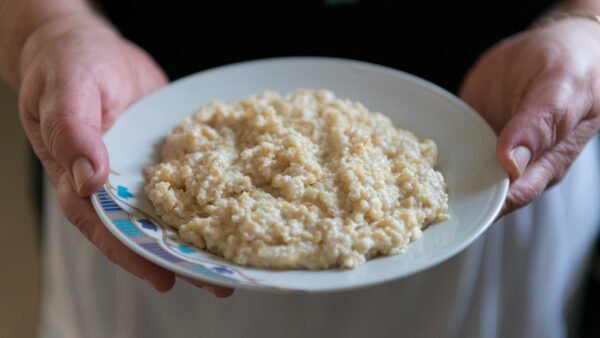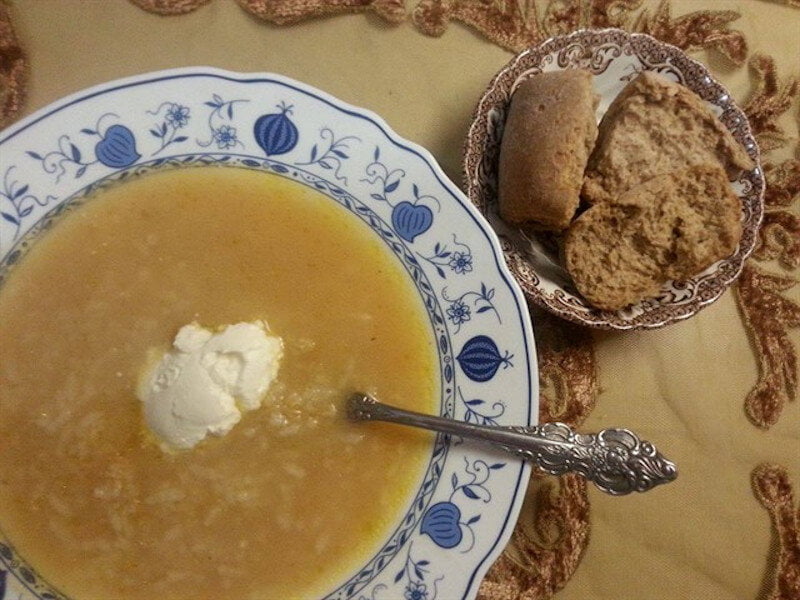Definition
Xinohondros is a traditional Cretan food product belonging to the broader family of trahana. It is produced by combining cracked wheat (chondro) with naturally soured milk or yoghurt (xino), resulting in a preserved, fermented cereal product with distinctive flavour and nutritional value.
Etymology
The name derives from the Greek words xino (ξινό, “sour”) and chondro (χονδρό, “coarse”), referencing the sour milk used in its preparation and the coarse texture of the cracked wheat.
Production
The preparation of xinohondros traditionally takes place in August, coinciding with the seasonal abundance of sheep and goat milk following the Dormition Fast (August 15). The process involves:
- Boil fresh milk with a small amount of salt and oil.
- Add cracked wheat and stir until the mixture thickens.
- Allow the mixture to cool and congeal.
- Cutting and spreading it in small pieces to dry in the summer heat, aided by regional winds.
Drying is essential for preservation, enabling the product to be stored for months and consumed throughout the year.
Culinary Uses
Xinohondros is primarily used as a base for soups, especially in winter. It may be cooked with meat broth, tomatoes, or vegetables, and in some cases, prepared fresh (before drying) as a breakfast dish, occasionally served hot and sweetened with sugar. It is also incorporated into pies and casseroles in Cretan cuisine.
Nutritional Value
- Carbohydrates: supplied by the cracked wheat.
- Protein and calcium are provided by milk.
- Fermentation benefits: imparts a slightly sour taste and contributes to preservation.
Cultural Significance
Historically, xinohondros served as a staple, high-energy food for agricultural communities in Crete. Today, it is regarded both as a nutritious traditional product and as a culinary emblem of Cretan heritage.
Photo: gastronomos





